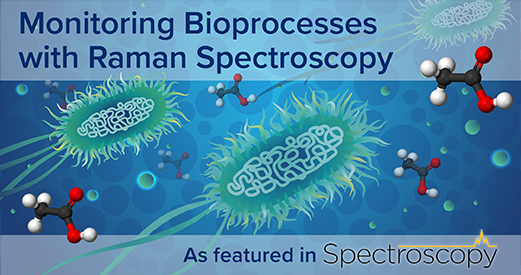
Our annual article in Spectroscopy‘s June Raman supplement for 2024 shows how affordable, reliable Raman instruments can be combined with intuitive AI-driven software to achieve noninvasive process monitoring in bioreactors.
Fermentation has long been essential for producing foods like beer, wine, and bread. Modern biotechnology now uses genetically modified microorganisms to create complex molecules, improving efficiency and quality in production. However, contamination remains a challenge, as unwanted microorganisms can reduce yields and increase costs by competing with the desired cell lines.
To overcome these challenges, non-invasive, in-line monitoring techniques are highly desirable. These approaches, such as optical monitoring through a view port, eliminate the need to break the sterile seal of a fermenter, thus reducing the risk of contamination. Additionally, in-line methods offer much faster feedback compared to traditional offline sampling, making them invaluable for maintaining optimal bioprocess conditions in real-time.
One of the most promising emerging technologies for this purpose is Raman spectroscopy. Known for its unparalleled specificity and ease of use, Raman spectroscopy is a powerful tool for monitoring bioprocesses. It is capable of simultaneously detecting multiple chemicals, is insensitive to water, and can be deployed with simple probe-based systems or even through a view port. This makes Raman spectroscopy especially well-suited for applications that demand continuous and accurate monitoring of bioprocesses. Recent technological advancements have made this tool more accessible and affordable, further driving its adoption in biotechnology.
Despite these advantages, one significant hurdle remains—the complexity of transforming spectroscopic data into actionable insights. Chemometric analysis, the process of converting spectral information into quantitative concentration data, can be challenging, particularly for those without specialized training.
Fortunately, new developments in AI-powered analysis software are helping to bridge this gap. By combining affordable, reliable Raman instruments with intuitive AI-driven software, even individuals without deep expertise in spectroscopy can now benefit from in-line Raman measurements. This democratization of the technology opens up a world of possibilities for biotechnology professionals, enabling them to monitor and control their processes with greater ease and precision—from laboratory research to full-scale production.
In this journal article, we show how the integration of Raman spectroscopy with the cutting-edge AI analysis tools available in RamanMetrix® software can revolutionize the way bioprocesses are monitored to improve yields, reduce contamination risks, and provide a more streamlined path to consistent, high-quality products.
Read the full article in Spectroscopy‘s Raman supplement, June 2024:
Real-Time Chemometric Analysis of Multicomponent Bioprocesses Using Raman Spectroscopy
To read more articles where Raman spectroscopy is used in healthcare, medicine and other bioprocesses, click here.